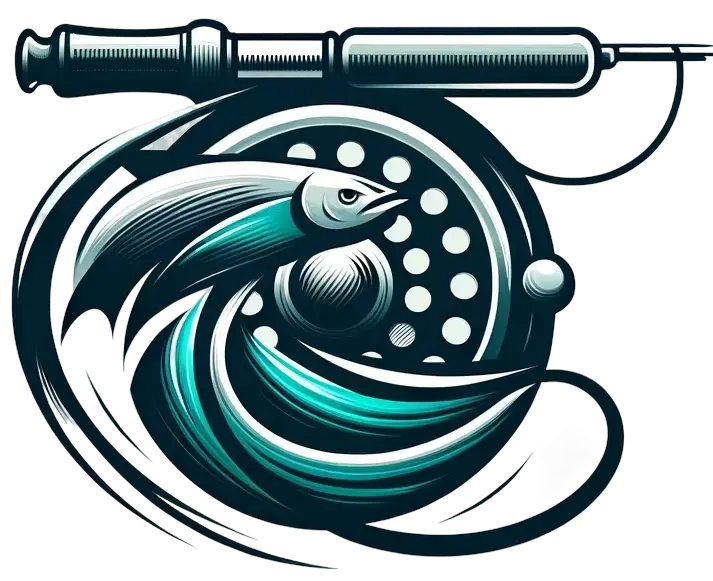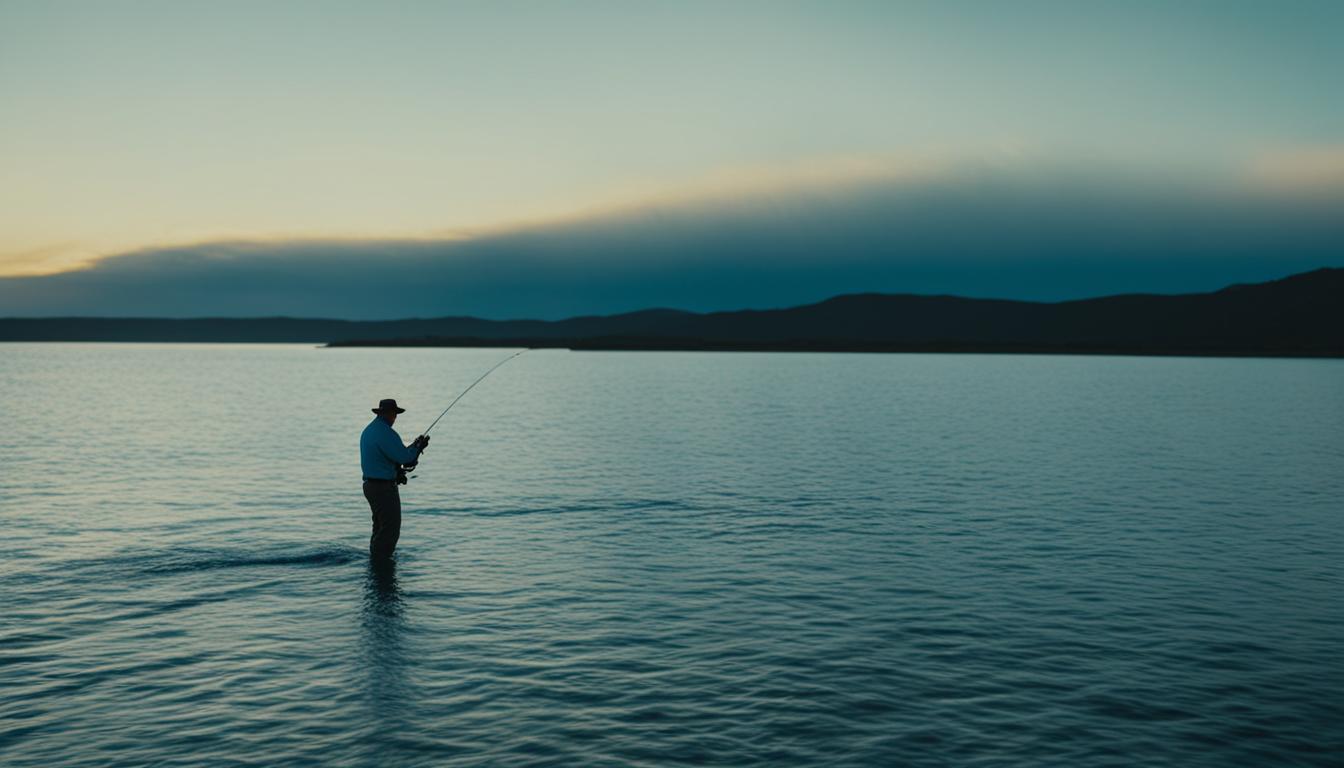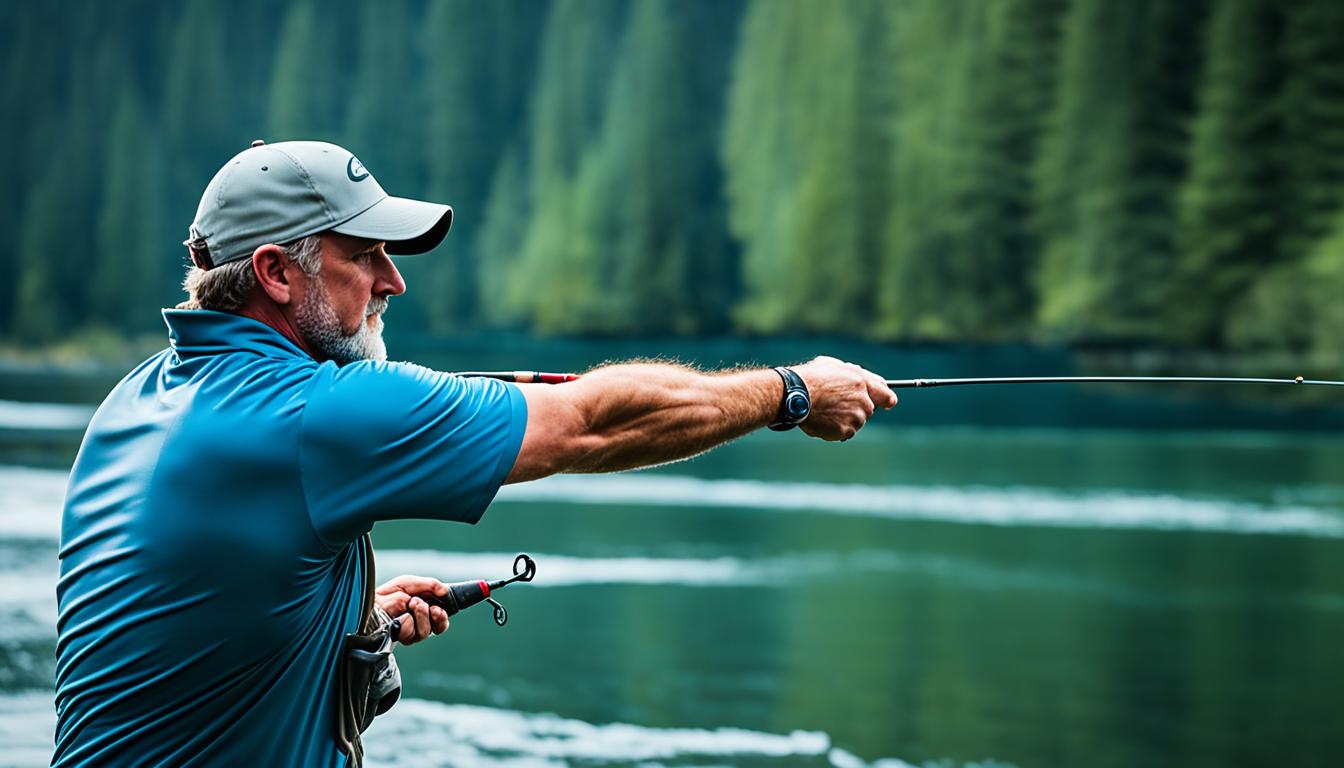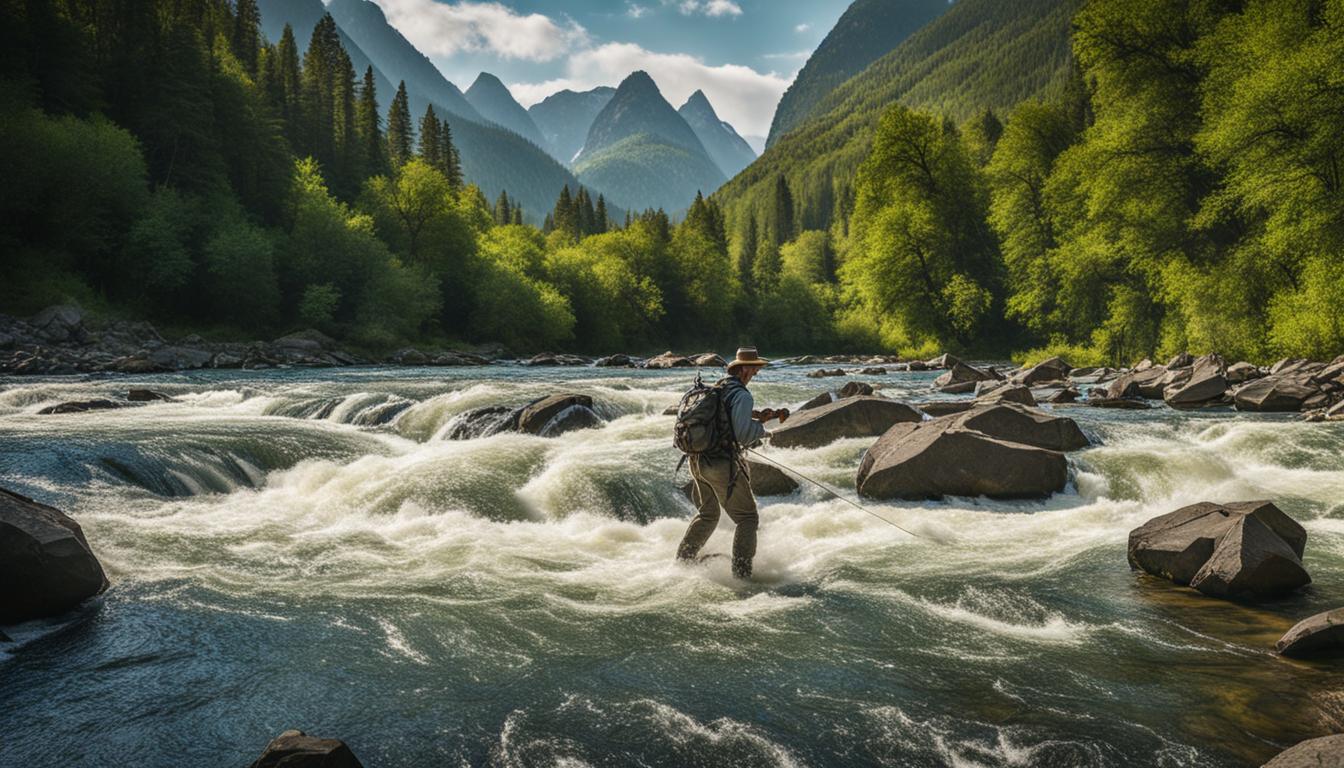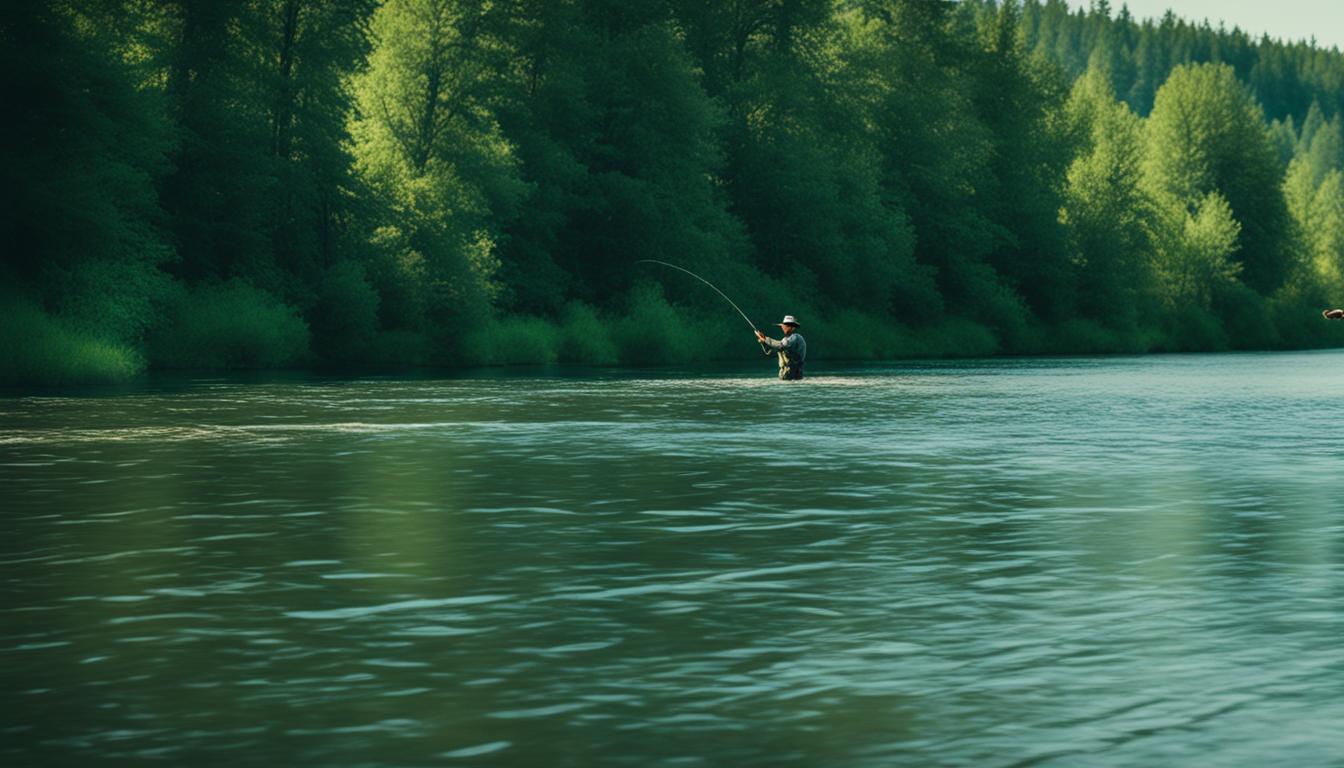Saltwater fly fishing offers a thrilling and unique experience for anglers. Whether you’re targeting bonefish, barracuda, or other game species, mastering the art of fly casting and understanding the right techniques is key to success. In this article, we will explore the top saltwater fly fishing game species and provide expert tips to enhance your fishing skills.
Key Takeaways:
- Understanding the behavior and preferences of each saltwater game species is crucial for success in fly fishing.
- Choosing the right gear, including rods, reels, and fly lines, is essential for saltwater fly fishing.
- Mastering techniques like stripping and fly casting will greatly enhance your chances of landing the big catch.
- Patience, adaptability, and situational awareness are vital skills for successful saltwater fly fishing.
- Investing in high-quality gear and practicing your casting skills are important considerations for saltwater fly fishing.
Top Saltwater Fly Fishing Game Species
When it comes to saltwater fly fishing, there is an abundance of game species to target. From barracuda and bonefish to redfish and sailfish, each species requires specific techniques and fly choices.
Barracuda, for example, are ambush predators with a sight range of up to 20 feet, so it’s important to use clear lines and artificial needlefish flies. Bonefish, on the other hand, are sight fishing game fish that prefer warm tropical waters, so using bonefish taper lines and imitating their natural prey with crustacean flies will yield the best results.
Understanding the behavior and preferences of each game species is crucial for successful saltwater fly fishing.
Choosing Saltwater Fly Fishing Gear
In addition to mastering the techniques, having the right fishing gear is essential for saltwater fly fishing. Your gear should be suitable for the specific fish species you are targeting and the location you will be fishing in. When selecting your gear, consider factors like the type of rod, reel, fly line, and flies.
A versatile, multi-purpose rod of 9 to 10-weight is a good choice for most saltwater fish species. Match your reel weight to your rod and choose a fly line that suits the fishing conditions, whether it’s floating, sinking, or opaque.
Don’t forget to include fly backing, leader, and tippet in your gear setup. These accessories play a crucial role in ensuring a successful and enjoyable saltwater fly fishing experience.
Recommended Gear Setup for Saltwater Fly Fishing:
| Item | Recommendation |
|---|---|
| Rod | Versatile 9 to 10-weight rod |
| Reel | Matching weight to the rod |
| Fly Line | Floating, sinking, or opaque as per fishing conditions |
| Fly Backing | Ample backing to handle strong fish |
| Leader | 9 to 12-foot tapered leader |
| Tippet | 0X to 3X fluorocarbon or monofilament tippet |
Investing in high-quality gear that matches the fish species and fishing conditions will significantly impact your success in saltwater fly fishing. Remember to check the specifications and recommendations provided by reputable fishing gear brands to make informed decisions.
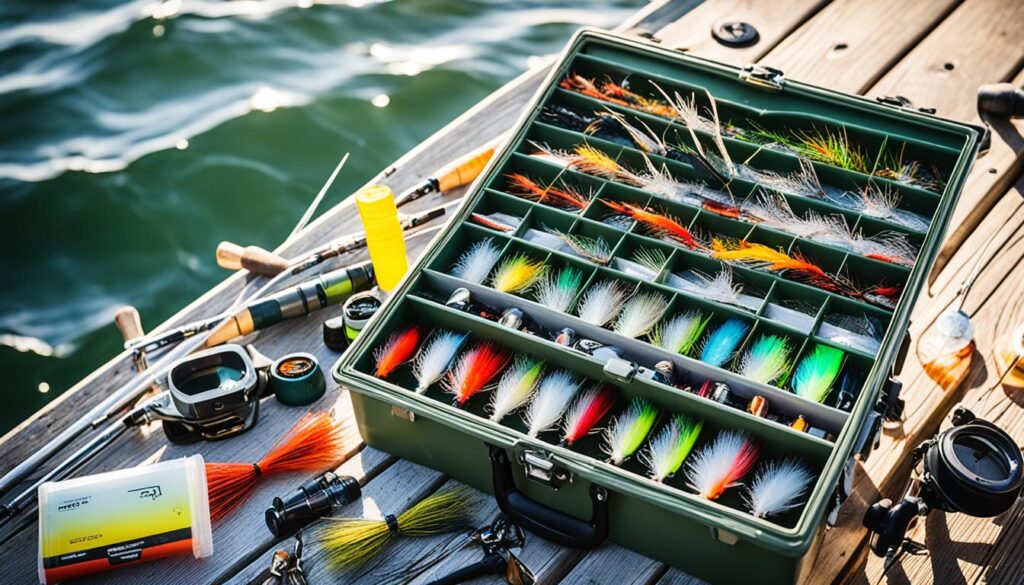
Saltwater Fly Fishing Techniques
To master saltwater fly fishing, we need to learn and practice various techniques that will enhance our fishing skills. Two essential techniques to focus on are stripping and fly casting.
Stripping Techniques in Fly Fishing
Stripping is a crucial technique in saltwater fly fishing that involves retrieving the fly by pulling or stripping the line with short, quick motions. This technique mimics the natural movements of prey, attracting the attention of game species. By varying the speed and pattern of your strips, you can imitate different prey behaviors and trigger strikes.
The key to effective stripping is to match the retrieval technique to the behavior of the fish species you’re targeting. For aggressively feeding fish, a fast, erratic strip can provoke a strike. In contrast, for more cautious or finicky species, a slower, more subtle strip may be necessary to entice them to bite.
Here are some popular stripping techniques:
- Long Strip: This technique involves pulling the line steadily with a smooth and gradual motion. It is effective for covering large distances and imitating fast-swimming prey.
- Short Strip: In this technique, you strip the line with quick, short motions to create rapid bursts of movement. It is ideal for imitating fleeing prey or triggering a predatory response.
- Pause and Strip: By stripping the line, pausing briefly, and then continuing the strip, you can mimic the stop-and-go movements of injured or struggling prey, enticing the fish to strike.
Fly Casting Techniques
Fly casting is another crucial technique that allows us to deliver the fly accurately and effectively to our target. With proper execution, we can present the fly in a way that appears natural to the fish, increasing our chances of success.
Remember, casting is not just about distance; it’s also about accuracy and presentation. A well-cast fly that lands softly and without spooking the fish is more likely to elicit a strike.
Here are some fly casting techniques to practice:
- False Casting: This technique involves making repeated casting motions without the fly touching the water. It helps to lengthen the line, change direction, or dry the fly. Be mindful not to false cast too much, as it may scare off the fish.
- Roll Cast: Use the roll cast when there is limited space behind you for a traditional backcast. It involves a sweeping motion, loading the rod, and then quickly stopping it, allowing the line to roll out in front.
- Double Haul: This advanced technique allows you to generate more line speed and power by adding a haul, or a quick pull, with your non-rod hand during the casting stroke. It is useful for casting in windy conditions or when casting large flies.
Remember, mastering these techniques takes practice, so don’t be discouraged if it doesn’t come naturally at first. With time and dedication, you’ll become more proficient and consistent in your saltwater fly fishing endeavors.
Now, let’s take a moment to marvel at the beauty of saltwater fly fishing in action:
| Stripping Techniques | Fish Species |
|---|---|
| Long Strip | Barracuda, Trevally |
| Short Strip | Tarpon, Jack Crevalle |
| Pause and Strip | Bonefish, Permit |
Tips for Success in Saltwater Fly Fishing
Here are some additional tips to improve your success in saltwater fly fishing:
- Carry backup gear: Always have a backup plan by bringing alternative flies and fishing gear. If the fish aren’t biting, switching up your approach can often make a difference.
- Practice patience and adaptability: Saltwater fishing conditions can change rapidly. Stay observant, and be willing to adapt your techniques and fly choices based on the conditions of the day.
- Use situational awareness: Position yourself strategically to take advantage of the wind, currents, and structure. This will help you make effective casts and set the hook properly.
- Keep practicing your fly fishing cast: The more you practice, the better your casting skills will become. Regular practice sessions will improve your accuracy, distance, and presentation, increasing your chances of landing trophy fish.
- Consider trying other types of saltwater fishing: While fly fishing is a rewarding and challenging technique, exploring other types of saltwater fishing, such as baitcasting or spinning, can offer new experiences and broaden your fishing skills.
Remember, success in saltwater fly fishing comes with practice, patience, and a willingness to learn. By applying these tips and continually honing your skills, you’ll be well on your way to mastering the art of fly fishing in saltwater.
Important Considerations in Saltwater Fly Fishing
When participating in saltwater fly fishing, we need to consider several factors to enhance our chances of success. Two key factors that significantly impact the outcome of our fishing trips are the choice of fly fishing gear and honing our fly casting techniques.
Investing in High-Quality Fly Fishing Gear
One of the most critical considerations in saltwater fly fishing is selecting the right gear, including the rod, reel, and fly line. Investing in high-quality gear ensures a more enjoyable and rewarding fishing experience. When choosing gear, it’s essential to consider the fish species we are targeting and the fishing conditions we will encounter.
For saltwater fly fishing, durability and corrosion resistance are crucial features to look for in our gear. Saltwater environments can be harsh on equipment, so opting for gear specifically designed for saltwater use is advisable. Brands like Sage, Orvis, and Redington offer excellent options for saltwater fly fishing gear.
An ideal setup for most saltwater species is a versatile and powerful fly rod with a weight of 9 to 10. This weight allows us to handle larger fish while still providing the necessary finesse for accurate casting. Pairing our rod with a reel that matches its weight ensures balance and control during the fight.
Another essential component of our gear setup is the fly line. Choosing the right fly line depends on the fishing conditions and the type of flies we will be using. Floating lines are suitable for shallow water and surface presentations, while sinking lines are excellent for deeper water or fishing at varying depths. Some popular fly line brands for saltwater fly fishing include Scientific Anglers, RIO, and Airflo.
By investing in high-quality gear that matches the fish species and fishing conditions, we maximize our chances of success on the water.
Honing Our Fly Casting Techniques
While having the right gear is crucial, it’s equally important to hone our fly casting techniques. Fly casting is the skill of delivering the fly accurately and efficiently to entice the fish to strike.
Practicing our casting skills is essential to improve our accuracy and distance. Regular practice sessions allow us to develop proper form, timing, and control in our casting motion. Consistency and precision are key to presenting the fly in a natural and enticing manner.
Here are a few fly casting techniques to focus on:
- Overhead Cast: The basic casting technique that delivers the fly in a straight line towards the target.
- Double Haul: A technique that generates more line speed and distance by using both the forward and backward strokes.
- Roll Cast: Useful for casting in tight quarters or when there is limited space behind us.
- Single Haul: A casting technique that adds extra power to the stroke by accelerating the line during the forward cast.
Practicing these casting techniques in different fishing scenarios, such as on the water or in the backyard, improves our muscle memory and overall casting proficiency. The more we refine our casting skills, the more accurate and effective our fly delivery becomes, increasing our chances of attracting fish and enticing strikes.
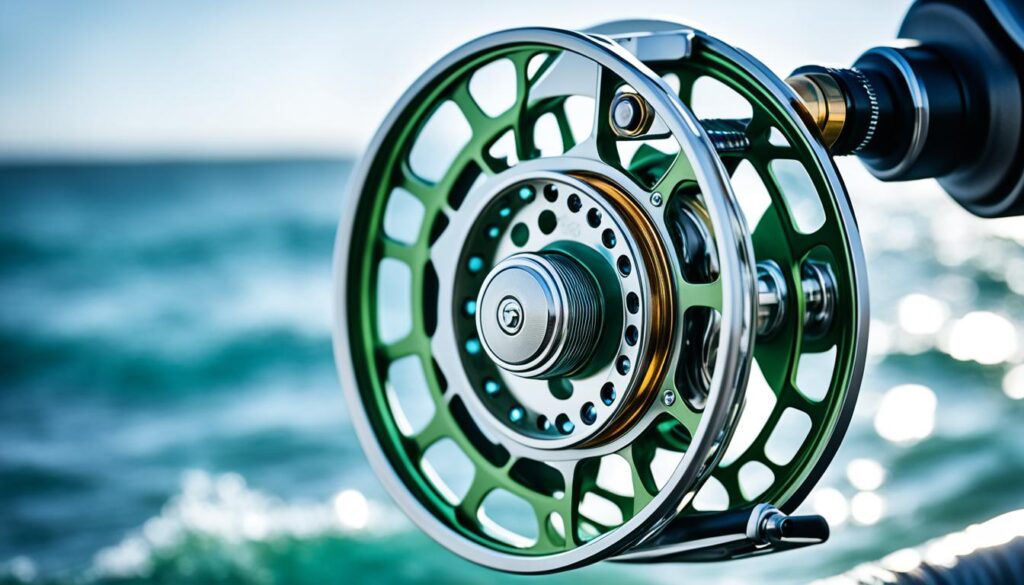
Conclusion
In conclusion, saltwater fly fishing is a thrilling and rewarding activity that allows anglers to test their skills and experience the beauty of the ocean. By mastering various techniques, such as stripping and fly casting, understanding the behavior of target species, and choosing the right gear, you can greatly increase your chances of success on your next fishing trip.
Whether you’re just starting out or have years of experience, there is always room for improvement and new discoveries in saltwater fly fishing. Continuously honing your skills and staying adaptable to changing conditions will keep you one step ahead in the pursuit of your dream catch.
So, gather your gear, head to the water, and embrace the excitement of saltwater fly fishing. Explore different game species, experiment with various flies, and embrace the challenges and triumphs that come with this incredible sport. Remember, the journey is just as important as the destination, and every cast brings you closer to becoming a master of saltwater fly fishing techniques.
FAQ
What are some essential saltwater fly fishing techniques?
Some essential saltwater fly fishing techniques include stripping, which involves retrieving the fly by pulling the line with short, quick motions, and fly casting, which involves the proper execution of the casting motion to deliver the fly accurately.
What are the top game species to target in saltwater fly fishing?
The top game species to target in saltwater fly fishing include barracuda, bonefish, redfish, and sailfish.
How do I choose the right gear for saltwater fly fishing?
When choosing gear for saltwater fly fishing, it’s important to consider factors like the type of rod, reel, fly line, and flies. A versatile, multi-purpose rod of 9 to 10-weight is a good choice for most saltwater fish species.
What are some tips for success in saltwater fly fishing?
Some tips for success in saltwater fly fishing include carrying backup gear, practicing patience and adaptability, using situational awareness, and continually practicing your fly casting skills.
What should I consider when participating in saltwater fly fishing?
When participating in saltwater fly fishing, it’s important to consider factors such as your gear, including your rod, reel, and fly line, as well as honing your fly casting technique for accurate and efficient fly delivery.
